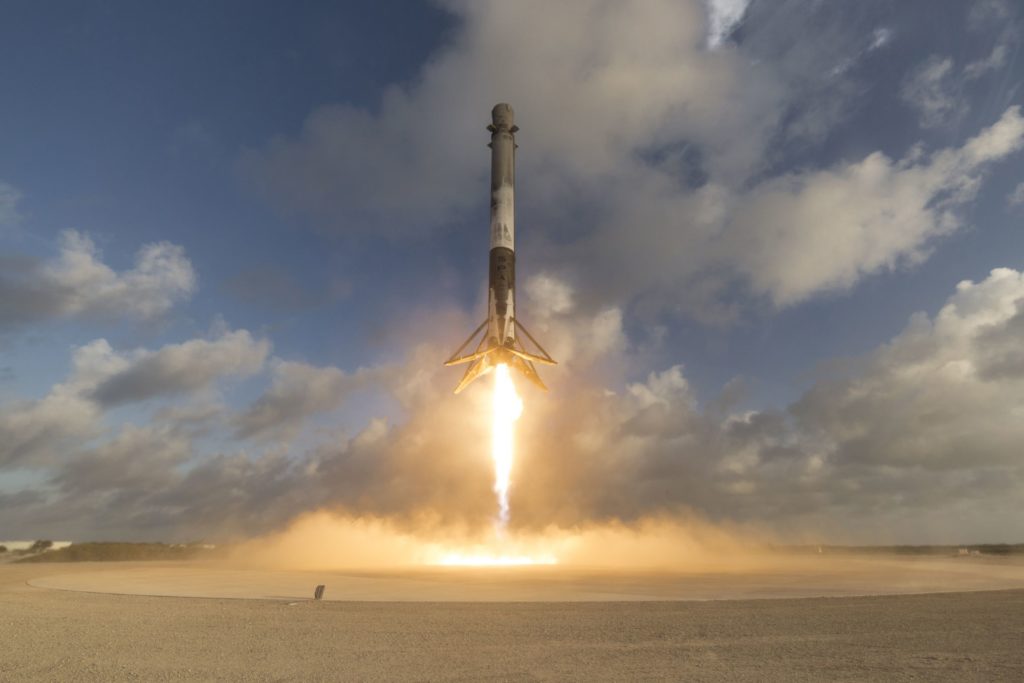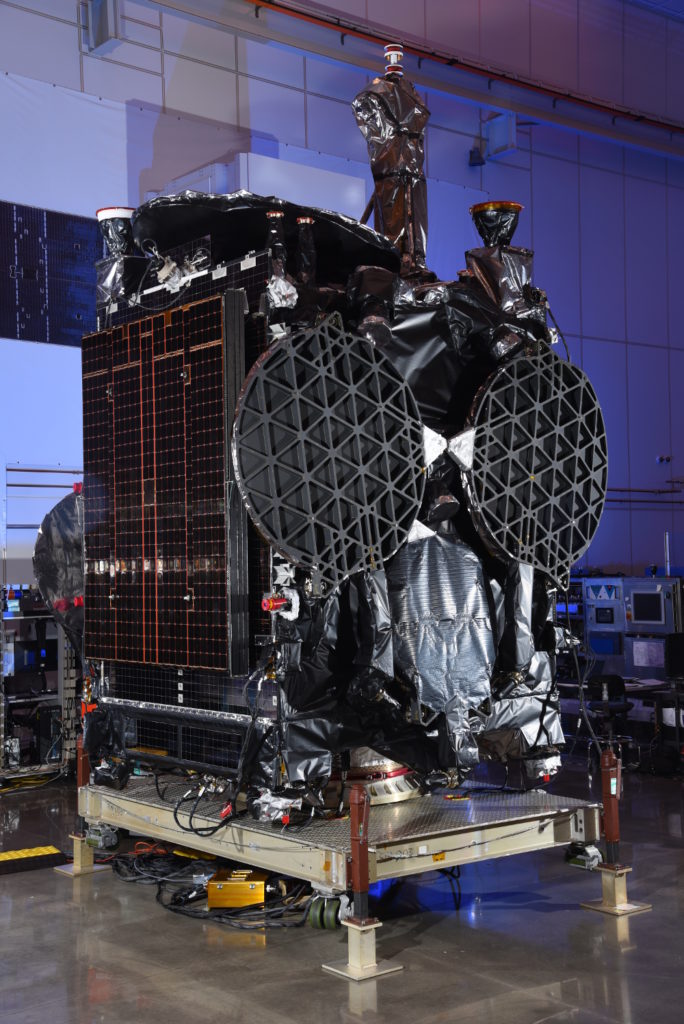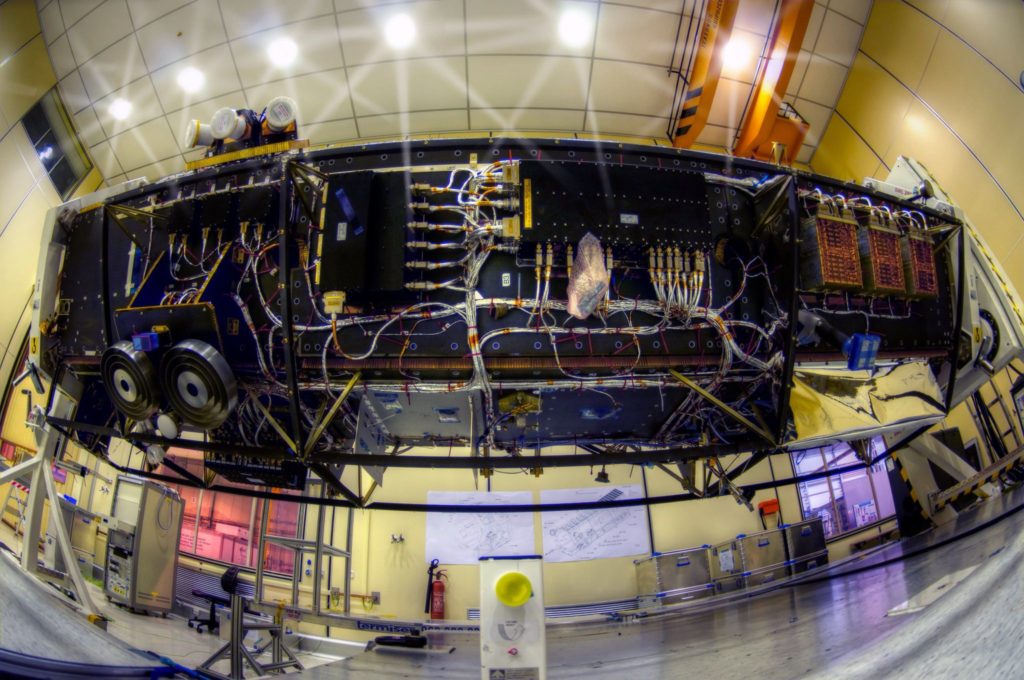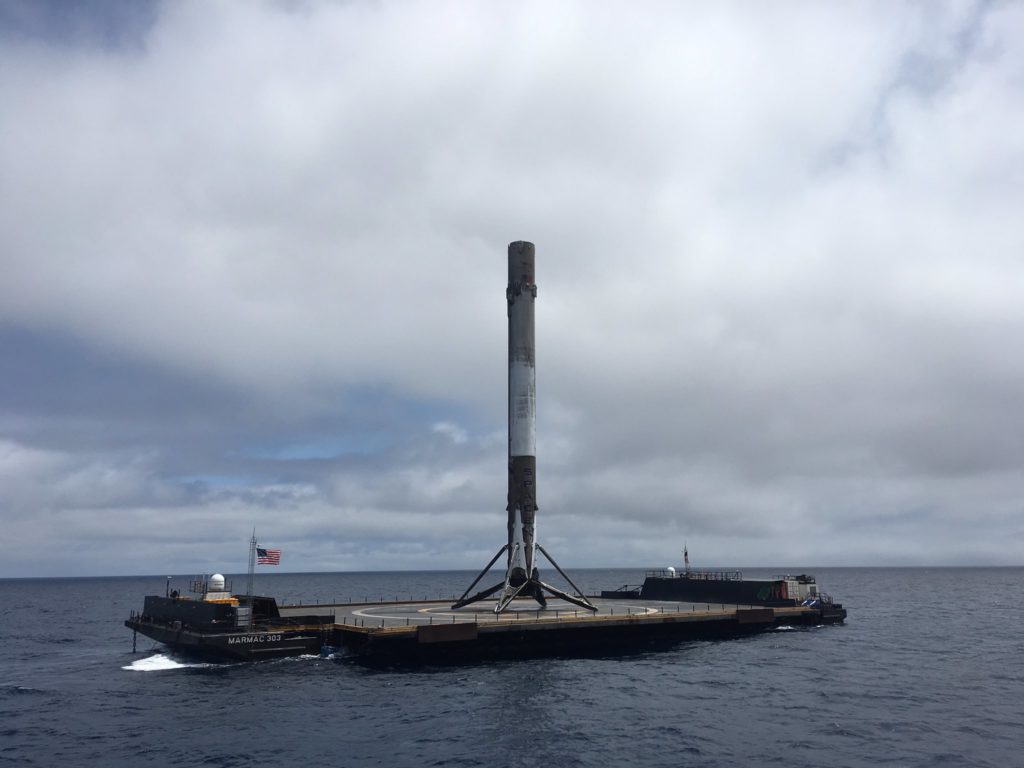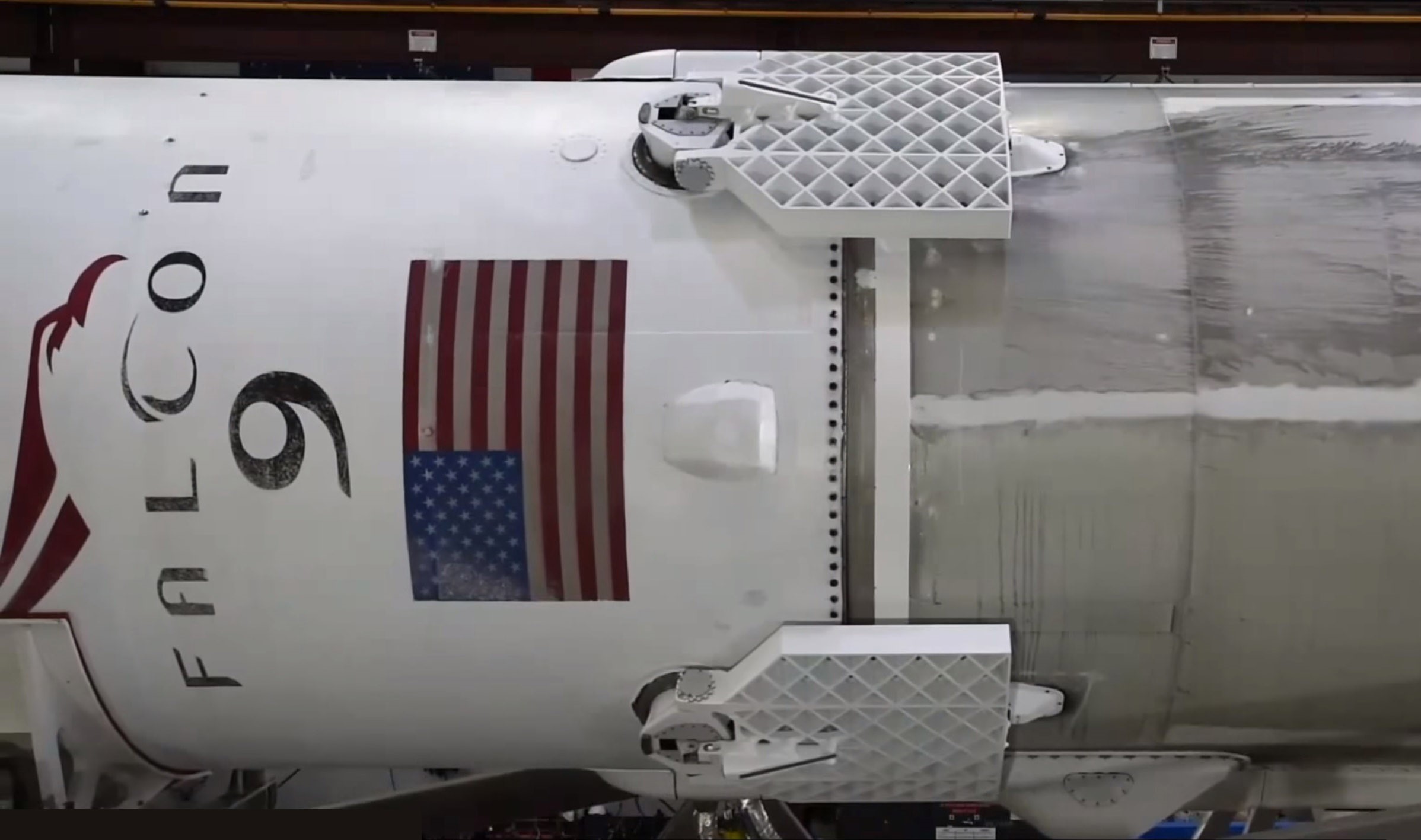
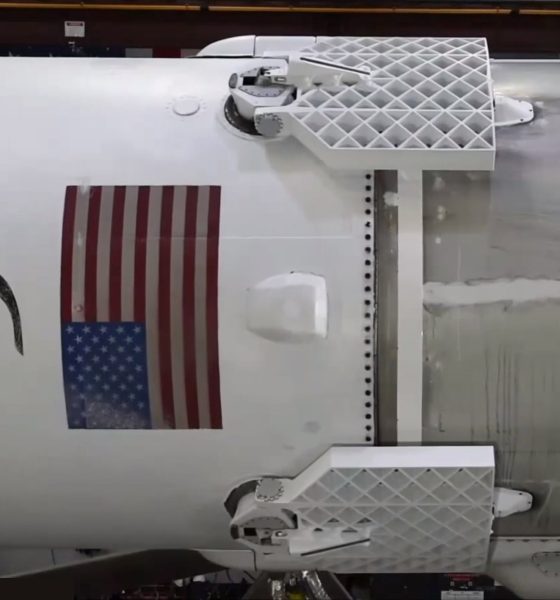
News
SpaceX on track to launch four rockets next month despite Falcon Heavy delays
Despite the intense focus on SpaceX’s first Falcon Heavy launch attempt and the testing preceding it, SpaceX is still a functioning business, and that business lies in launching payloads into Earth orbit. While it appears that January is unlikely to see any additional SpaceX launches, particularly Falcon Heavy, the launch company’s February manifest appears to be rapidly firming up.
Perhaps most significantly, two geostationary communications satellites completed their long journeys to Cape Canaveral, Florida within the last week or so, and a third payload on the West Coast is presumed to be at Vandenberg Air Force Base, all preparing for February launches. Meanwhile, although it is unclear how close Falcon Heavy is to launching, a date in mid to late February appears realistic at this point. As such, SpaceX has at least three and maybe four missions concretely planned for February – concrete in the sense that three of them were given specific launch dates within the last week.
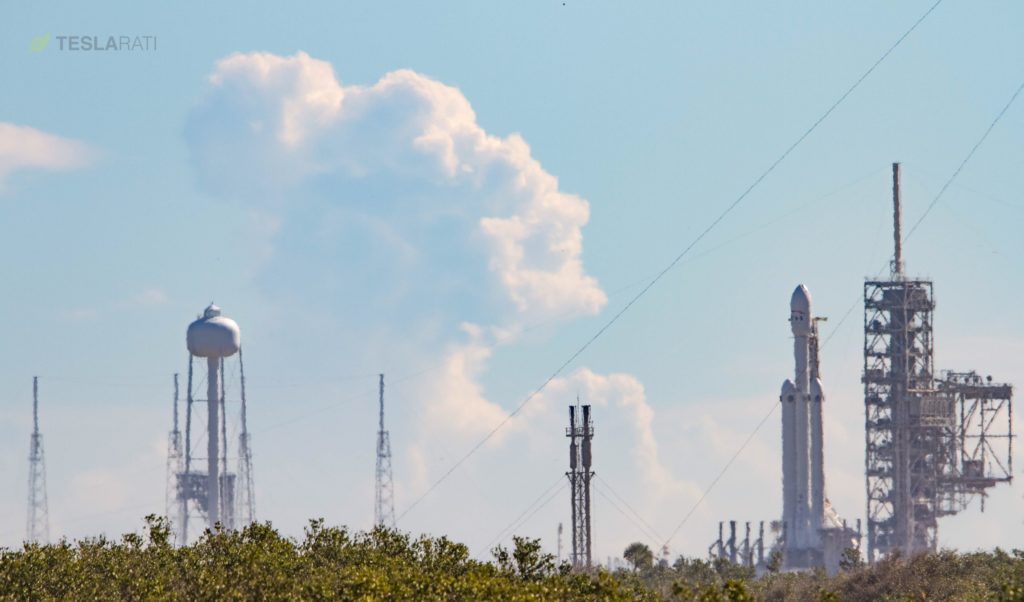
Falcon Heavy is now targeting Friday, January 19 for its first static fire test. (Tom Cross/Teslarati)
A return to stride
Following a halcyon year of 18 launches, SpaceX appears to be ready to tackle its manifest headfirst after a relatively relaxed start to 2018. January saw a single SpaceX launch, Zuma, as well as the ongoing series of tests of the first completed Falcon Heavy launch vehicle, although the big rocket’s launch date has likely already slipped into February at the earliest. Still, SpaceX’s Falcon 9 workhorse rocket is rearing for additional launches, and options abound.
GovSat-1 (SES-16) – NET late January 2018
First on the docket is the launch of GovSat-1/SES-16, a public-private partnership between Luxembourg’s government and the renowned Lux.-based satellite manufacturer and operator, SES. Similar to Hispasat, GovSat-1 is a geostationary communications satellite weighing around 4000 kg that will be placed in a geostationary transfer orbit by Falcon 9. If it flies before Falcon Heavy, something I’d place at around 99% likely, the launch of PAZ will mark SpaceX’s first reused flight of 2018, with many, many more to come. This particular launch will use Core 1032 from the secretive NROL-76 mission back in May 2017. 1032 is an older booster, and thus a recovery attempt is unlikely – Block 3 Falcon 9s were never designed to be reused more than once or twice, especially not after toasty high-energy recoveries necessitated by geostationary launches.
- After launching NROL-76 in May 2017, B1032 returned to Landing Zone-1 for a successful landing. (SpaceX)
- SES and GovSats’ first partnered satellite, GovSat-1/SES-16. (SES)
PAZ – Starlink prototype co-passengers – NET February 10 2018, 6:52am PST
Up next, PAZ is a commercial imaging satellite designed to return high-resolution photos of Earth from a relatively low polar orbit of approximately 500 km. It’s believed that this mission will be launched aboard a flight-proven Falcon 9 booster, Core 1038, previously tasked with the launch of the small Formosat-5 imaging satellite in August 2017. The mission will be the second 2018 launch of a flight proven booster for SpaceX, following on the heels of GovSat-1. Perhaps more important than reuse (but secondary to the customer’s payload insertion), however, is the probable presence of two of SpaceX’s first prototype broadband satellites, a constellation now known to be called Starlink.
This will be a major achievement for SpaceX’s satellite constellation efforts, as the several hundred employees SpaceX has stationed in Washington State and outside of Hawthorne, CA will finally be able to operationally test the fruit of many months of hard but silent work. Given the presence of two satellites, it’s assumed that these test satellites, Microsat 2A and 2B, have been designed to test all of the main components SpaceX has been developing, particularly the optical (LASER) on orbit communications system. By allowing each satellite to communicate at incredibly high bandwidths with each other, SpaceX’s ultimate goal is to create a mesh network of connectivity covering the entire Earth.
As such, fingers crossed that SpaceX begins to discuss Starlink in more detail as 2018 progresses and PAZ and its Microsat co-passengers reach orbit in February. Sadly, although the combined payload is small and the planned orbit low, the twice-flight-proven booster may meet its ultimate fate in the Pacific Ocean – a recovery attempt is no longer guaranteed for older, reused Falcon 9s. However, while not officially confirmed, this launch could see the debut of SpaceX’s Western landing pad, currently known as SLC-4 West (SLC-4W). Rather than attempting recovery aboard the drone ship Just Read The Instructions, Falcon 9 1038 would instead flip around and return to a landing area less than a kilometer away from its VAFB launch pad. Expect official confirmation as the launch date approaches.
- The Spanish company Hisdesat’s PAZ imaging satellite. (Hisdesat)
- Falcon 9 1038 aboard Just Read The Instructions after the launch of Formosat-5. (SpaceX)
Hispasat 30W-6 (1F) – No Earlier Than (NET) mid-February 2018
Finally, Hispasat is a relatively hefty 6000 kg commercial communications satellite slated for launch aboard what is believed to be a new Falcon 9 rocket. With SpaceX aiming to place the satellite into a geostationary transfer orbit, this will almost certainly preclude any attempts at recovering the first stage – the booster will need to expend most of its fuel to accomplish the job, leaving no reserve to conduct landing burns at sea. Hispasat’s Falcon 9 will thus likely be the first new booster to be expended intentionally by SpaceX in 2018.
Spain's @Hispasat: 30W-6 telecom sat arrives at Cape Canaveral from builder @sslmda to prepare for Feb launch on @SpaceX Falcon 9. Sat carries Ku-, C- & Ka-band payload for Americas/trans-Atlantic. pic.twitter.com/Zfhi1cE5vx
— Peter B. de Selding (@pbdes) January 16, 2018
Another busy year?
If February is to be representative of SpaceX’s 2018 launch cadence, the year is going to be a crazy one for the rocket company. As of IAC 2017, Elon Musk showed an estimated 30 launches as the company’s goal this year, compared to 20 in 2017 (SpaceX was only two launches short of that). While Falcon Heavy may be understandably stealing the buzz and then some from those interested in spaceflight and technology, it is an absolute necessity that SpaceX remains a viable and reliable launch company if they hope to pursue more aspirational technologies like Falcon Heavy, BFR, and more. Here’s to hoping that SpaceX manages to make 2018 equally or even more successful than 2017.
Follow along live as launch photographer Tom Cross and I cover these exciting proceedings as close to live as possible.
Teslarati – Instagram – Twitter
Tom Cross – Instagram
Eric Ralph – Twitter

News
Tesla China delivery centers look packed as 2025 comes to a close
Needless to say, it appears that Tesla China seems intent on ending 2025 on a strong note.

Tesla’s delivery centers in China seem to be absolutely packed as the final days of 2025 wind down, with photos on social media showing delivery locations being filled wall-to-wall with vehicles waiting for their new owners.
Needless to say, it appears that Tesla China seems intent on ending 2025 on a strong note.
Full delivery center hints at year-end demand surge
A recent image from a Chinese delivery center posted by industry watcher @Tslachan on X revealed rows upon rows of freshly prepared Model Y and Model 3 units, some of which were adorned with red bows and teddy bears. Some customers also seem to be looking over their vehicles with Tesla delivery staff.
The images hint at a strong year-end push to clear inventory and deliver as many vehicles as possible. Interestingly enough, several Model Y L vehicles could be seen in the photos, hinting at the demand for the extended wheelbase-six seat variant of the best-selling all-electric crossover.
Strong demand in China
Consumer demand for the Model Y and Model 3 in China seems to be quite notable. This could be inferred from the estimated delivery dates for the Model 3 and Model Y, which have been extended to February 2026 for several variants. Apart from this, the Model Y and Model 3 also continue to rank well in China’s premium EV segment.
From January to November alone, the Model Y took China’s number one spot in the RMB 200,000-RMB 300,000 segment for electric vehicles, selling 359,463 units. The Model 3 sedan took third place, selling 172,392. This is quite impressive considering that both the Model Y and Model 3 are still priced at a premium compared to some of their rivals, such as the Xiaomi SU7 and YU7.
With delivery centers in December being quite busy, it does seem like Tesla China will end the year on a strong note once more.
News
Tesla Giga Berlin draws “red line” over IG Metall union’s 35-hour week demands
Factory manager André Thierig has drawn a “red line” against reducing Giga Berlin’s workweek to 35 hours, while highlighting that Tesla has actually increased its workers’ salaries more substantially than other carmakers in the country.

Tesla Giga Berlin has found itself in a new labor dispute in Germany, where union IG Metall is pushing for adoption of a collective agreement to boost wages and implement changes, such as a 35-hour workweek.
In a comment, Giga Berlin manager André Thierig drew a “red line” against reducing Giga Berlin’s workweek to 35 hours, while highlighting that Tesla has actually increased its workers’ salaries more substantially than other carmakers in the country.
Tesla factory manager’s “red line”
Tesla Germany is expected to hold a works council election in 2026, which André Thierig considers very important. As per the Giga Berlin plant manager, Giga Berlin’s plant expansion plans might be put on hold if the election favors the union. He also spoke against some of the changes that IG Metall is seeking to implement in the factory, like a 35-hour week, as noted in an rbb24 report.
“The discussion about a 35-hour week is a red line for me. We will not cross it,” Theirig said.
“(The election) will determine whether we can continue our successful path in the future in an independent, flexible, and unbureaucratic manner. Personally, I cannot imagine that the decision-makers in the USA will continue to push ahead with the factory expansion if the election results favor IG Metall.”
Giga Berlin’s wage increase
IG Metall district manager Jan Otto told the German news agency DPA that without a collective agreement, Tesla’s wages remain significantly below levels at other German car factories. He noted the company excuses this by referencing its lowest pay grade, but added: “The two lowest pay grades are not even used in car factories.”
In response, Tesla noted that it has raised the wages of Gigafactory Berlin’s workers more than their German competitors. Thierig noted that with a collective agreement, Giga Berlin’s workers would have seen a 2% wage increase this year. But thanks to Tesla not being unionized, Gigafactory Berlin workers were able to receive a 4% increase, as noted in a CarUp report.
“There was a wage increase of 2% this year in the current collective agreement. Because we are in a different economic situation than the industry as a whole, we were able to double the wages – by 4%. Since production started, this corresponds to a wage increase of more than 25% in less than four years,” Thierig stated.
News
Tesla is seeing a lot of momentum from young Koreans in their 20s-30s: report
From January to November, young buyers purchased over 21,000 Teslas, putting it far ahead of fellow imported rivals like BMW and Mercedes-Benz.

Tesla has captured the hearts of South Korea’s 20s-30s demographic, emerging as the group’s top-selling imported car brand in 2025. From January to November, young buyers purchased over 21,000 Teslas, putting it far ahead of fellow imported rivals like BMW and Mercedes-Benz.
Industry experts cited by The Economist attributed this “Tesla frenzy” to fandom culture, where buyers prioritize the brand over traditional car attributes, similar to snapping up the latest iPhone.
Model Y dominates among young buyers
Data from the Korea Imported Automobile Association showed that Tesla sold 21,757 vehicles to the 20s-30s demographic through November, compared to BMW’s 13,666 and Mercedes-Benz’s 6,983. The Model Y led the list overwhelmingly, with variants like the standard and Long Range models topping purchases for both young men and women.
Young men bought around 16,000 Teslas, mostly Model Y (over 15,000 units), followed by Model 3. Young women followed a similar pattern, favoring Model Y (3,888 units) and Model 3 (1,083 units). The Cybertruck saw minimal sales in this group.
The Model Y’s appeal lies in its family-friendly SUV design, 400-500 km range, quick acceleration, and spacious cargo, which is ideal for commuting and leisure. The Model 3, on the other hand, serves as an accessible entry point with lower pricing, which is valuable considering the country’s EV subsidies.
The Tesla boom
Experts described Tesla’s popularity as “fandom culture,” where young buyers embrace the brand despite criticisms from skeptics. Professor Lee Ho-geun called Tesla a “typical early adopter brand,” comparing purchases to iPhones.
Professor Kim Pil-soo noted that young people view Tesla more as a gadget than a car, and they are likely drawn by marketing, subsidies, and perceived value. They also tend to overlook news of numerous recalls, which are mostly over-the-air software updates, and controversies tied to the company.
Tesla’s position as Korea’s top import for 2025 seems secured. As noted by the publication, Tesla’s December sales figures have not been reported yet, but market analysts have suggested that Tesla has all but secured the top spot among the country’s imported cars this year.
